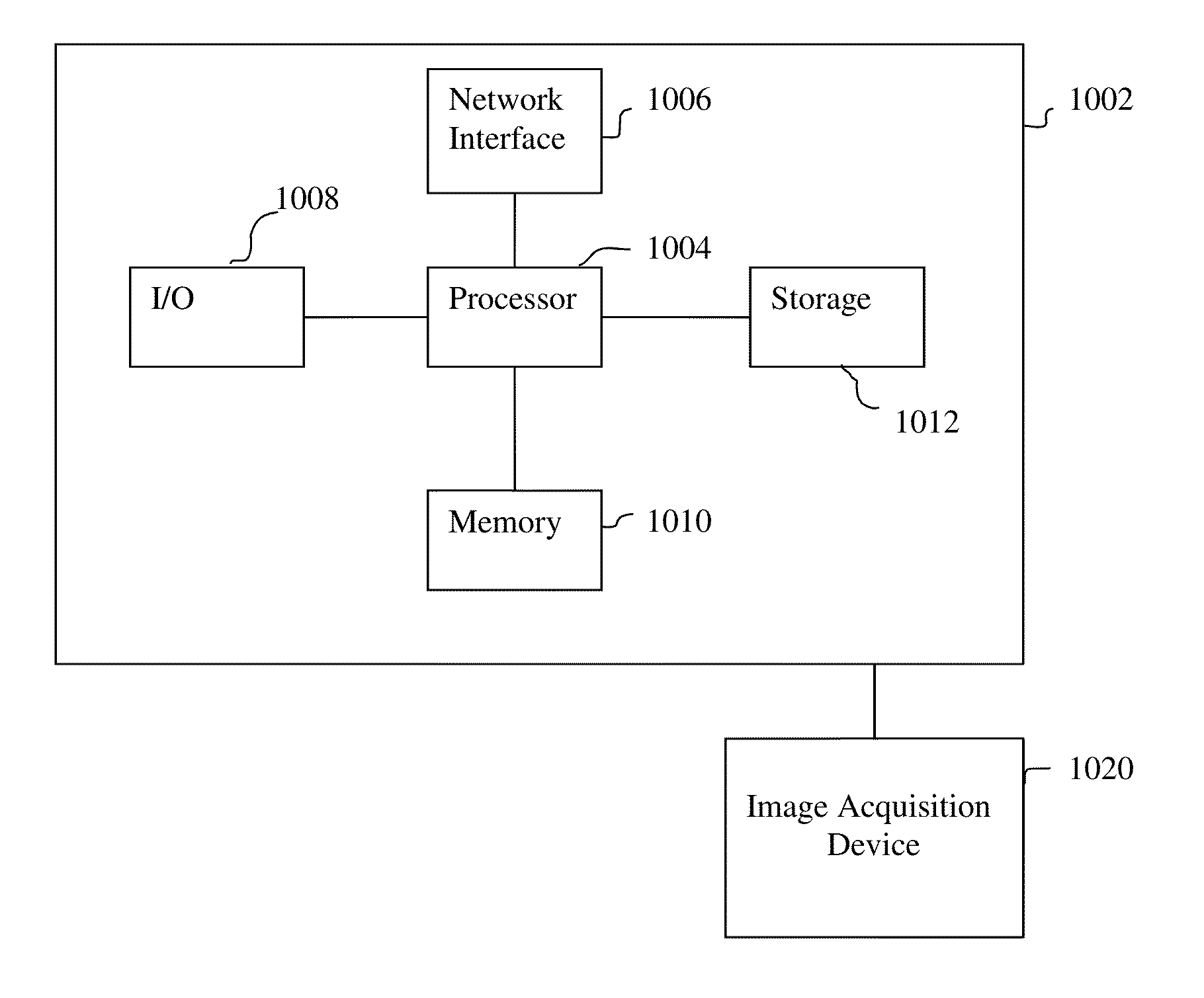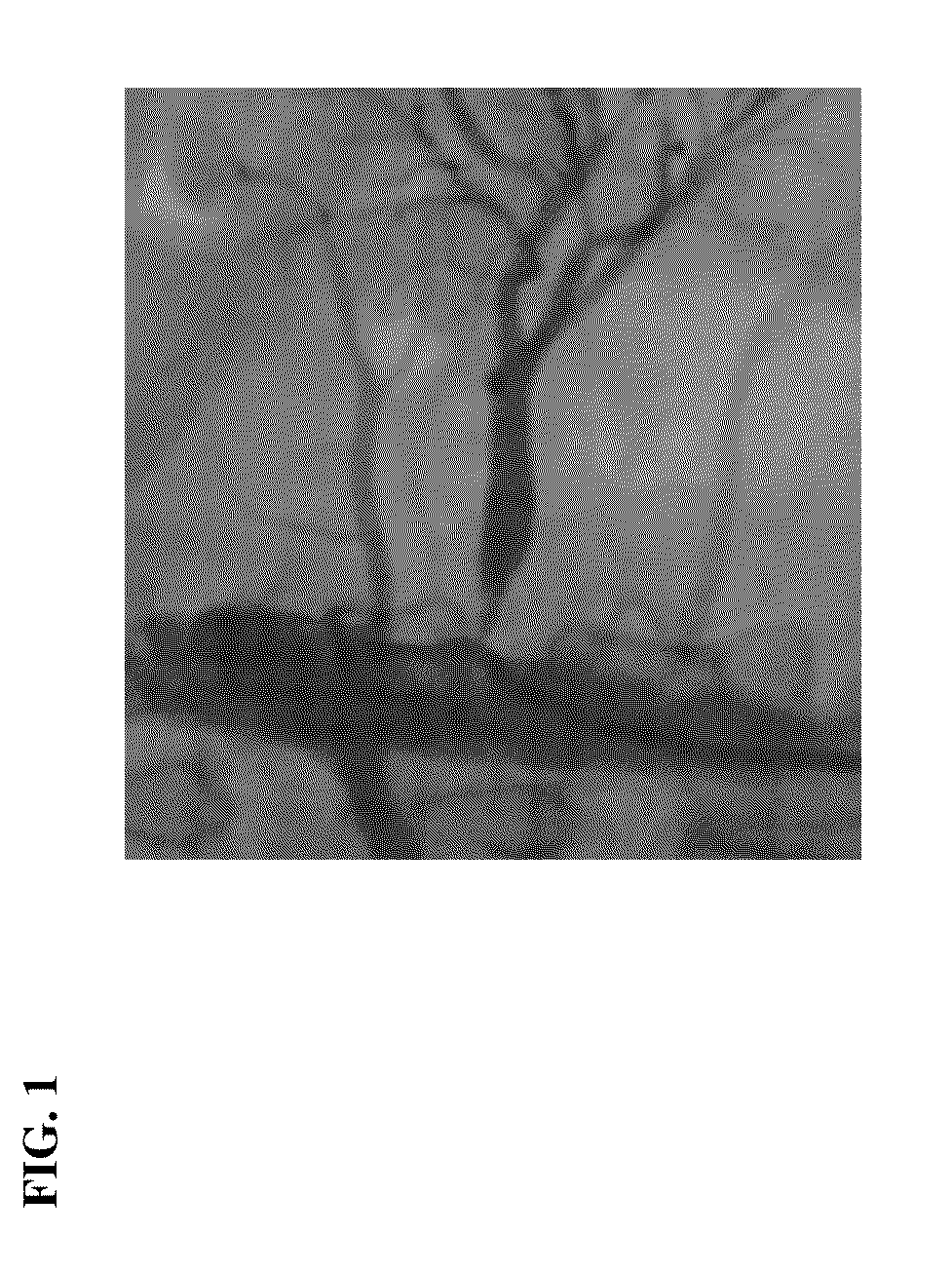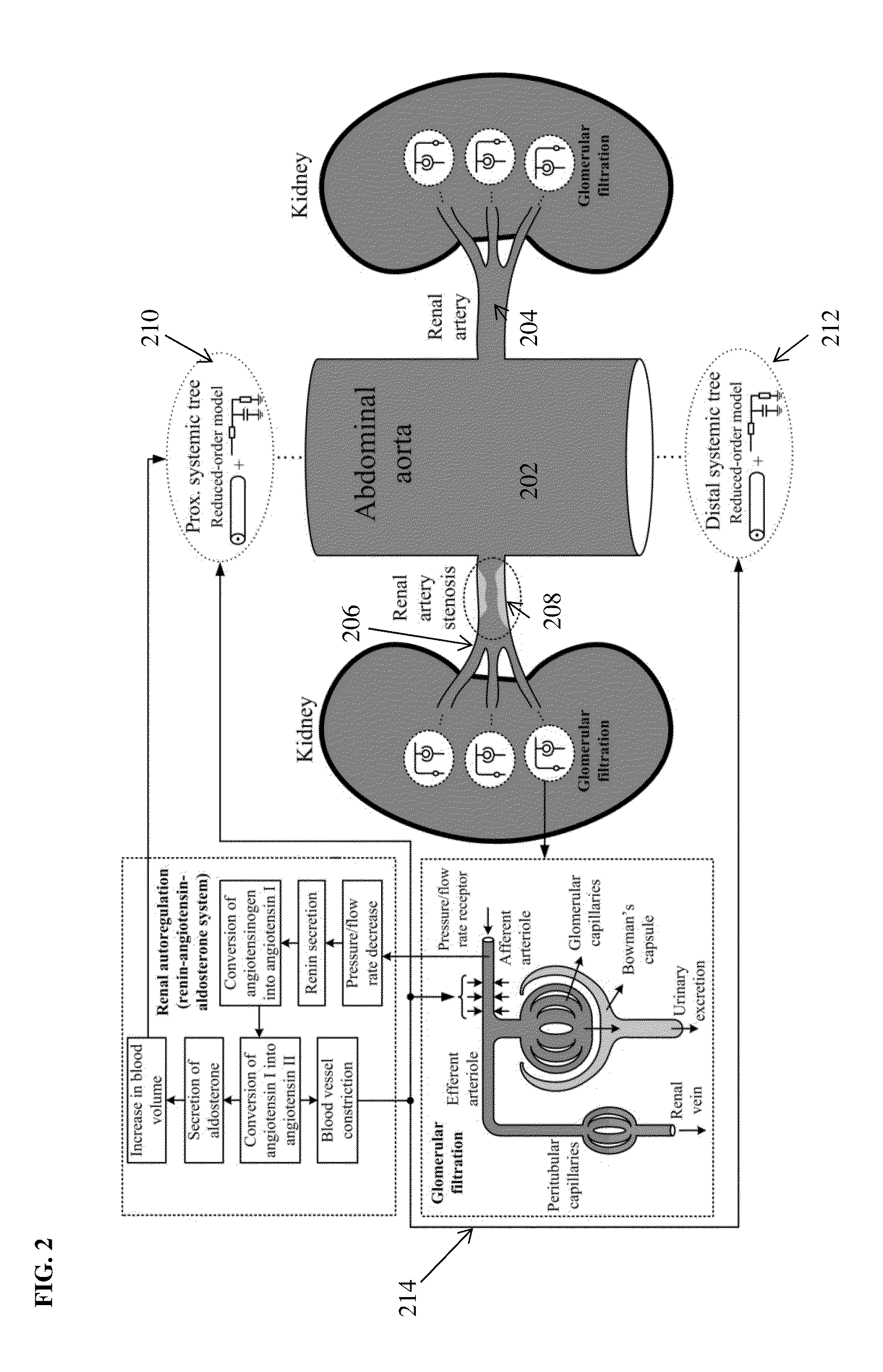Method and System for Personalized Non-Invasive Hemodynamic Assessment of Renal Artery Stenosis from Medical Images
a technology of hemodynamic assessment and medical images, applied in image data processing, medical simulation, sensors, etc., can solve the problems of increasing patient risk, increasing patient risk, and straining healthcare budgets, and achieve the effect of reliably assessing the functional significance of ras
- Summary
- Abstract
- Description
- Claims
- Application Information
AI Technical Summary
Benefits of technology
Problems solved by technology
Method used
Image
Examples
Embodiment Construction
[0019]The present invention relates to methods and systems for personalized non-invasive functional assessment of renal artery stenosis (RAS) from medical image data. Embodiments of the present invention are described herein to give a visual understanding of the method for non-invasive functional assessment of RAS. A digital image is often composed of digital representations of one or more objects (or shapes). The digital representation of an object is often described herein in terms of identifying and manipulating the objects. Such manipulations are virtual manipulations accomplished in the memory or other circuitry / hardware of a computer system. Accordingly, it is to be understood that embodiments of the present invention may be performed within a computer system using data stored within the computer system.
[0020]Renal Artery Stenosis (RAS) refers to the narrowing of the renal artery, and is typically caused by either atherosclerosis or fibromuscular dysplasia. FIG. 1 illustrates ...
PUM
 Login to View More
Login to View More Abstract
Description
Claims
Application Information
 Login to View More
Login to View More - R&D
- Intellectual Property
- Life Sciences
- Materials
- Tech Scout
- Unparalleled Data Quality
- Higher Quality Content
- 60% Fewer Hallucinations
Browse by: Latest US Patents, China's latest patents, Technical Efficacy Thesaurus, Application Domain, Technology Topic, Popular Technical Reports.
© 2025 PatSnap. All rights reserved.Legal|Privacy policy|Modern Slavery Act Transparency Statement|Sitemap|About US| Contact US: help@patsnap.com



